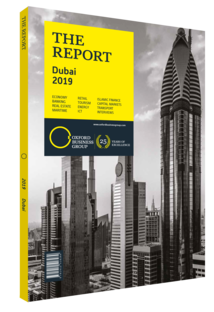Strategies to match supply with demand for affordable housing in Dubai
With forecasts suggesting that Dubai’s population will grow from 3m in 2017 to 5m by 2027, affordable housing is set to become an increasingly pressing issue in the emirate. “A lot of the supply in Dubai is mismatched, compared to where the actual demand is,” John Allen, director of valuation and advisory at Asteco, told OBG. “Traditionally, the supply has tended to be at the higher end of the market, whereas the bulk of demand is at the affordable level.”
Defining Affordability
According to Craig Plumb, head of research for MENA at the property and investment advisor JLL, Dh800,000 ($218,000) represents the top price point that as many as 40% of the city’s families, earning an average monthly salary of Dh20,000-30,000 ($5440-8170), can pay for a two-bedroom apartment. However, the units that developers typically pitch as affordable are often considerably pricier than what renters are willing to spend.
Only 20% of residential properties finished in 2017 fell within JLL’s definition of affordable, despite evident demand for these units. According to the Affordable Housing Institute, a US-based non-profit, 82% of sales were worth less than Dh2m ($544,000) and 47% fell below Dh1m ($272,000) in 2017. Meanwhile, 85% of all purchased units were apartments, further indicating demand for budget-friendly properties.
In a statement to local press in January 2018, Mahmoud Al Burai, CEO of the Dubai Real Estate Institute (DREI), explained that, to some extent, the recent softening of prices in the residential real estate market has itself increased unit affordability and helped to drive migration into the city. Lower prices have attracted many prospective buyers towards the possibility of securing a rung on the housing ladder. Their interest has been further encouraged by competing developers who are willing to incentivise property purchases through long-term financing. Structural changes, such as a move among suppliers towards reducing unit sizes and the increasing mechanisation and standardisation of construction processes, could further serve to drive down costs.
Shifting Focus
Increasing interest in the midrange property market has led banks to consider requesting an easing of the loan-to-value (LTV) ratios regulating mortgages. Purchases by foreigners currently require a 25% deposit, while Emiratis must pay 20% upfront. These rules were introduced in 2013, following the fall of real estate prices during the financial crisis of 2008, in part to prevent the kind of speculative property investment that could begin a boom-andbust cycle. The retail banking committee of the UAE Banks Federation has proposed reducing these limits to 15% and 20% for UAE nationals and expatriates, respectively. Despite these downward pressures, the Dh800,000 ($218,000) price point remains out of reach for a large part of Dubai’s labour force, especially those working in retail and hospitality services, and even the proposed reduction in LTV ratios would not do enough to make mortgages accessible.
In 2015 Dubai Municipality classified affordable housing as accommodation for those earning Dh3000-10,000 ($817-2720) per month. Only 6% of Dubai’s housing stock is affordable to households earning less than Dh10,000 ($2720) in monthly income, according to industry reports. Moreover, even as developers have shifted gear towards boosting supply for the mid-range market, demand for cheaper units is still largely neglected. The DREI is planning to introduce an inclusionary zoning policy that would mandate that developers set aside 15-20% of every project to the construction of affordable housing.
While initiatives of this sort have been broadly encouraged, any increase in the provision of affordable units will ultimately result from market pressure. If Dubai is to continue growing, it will happen because developers have begun to recognise the opportunities available in providing housing to the city’s middle class, alongside the historical market for luxury properties.
You have reached the limit of premium articles you can view for free.
Choose from the options below to purchase print or digital editions of our Reports. You can also purchase a website subscription giving you unlimited access to all of our Reports online for 12 months.
If you have already purchased this Report or have a website subscription, please login to continue.

